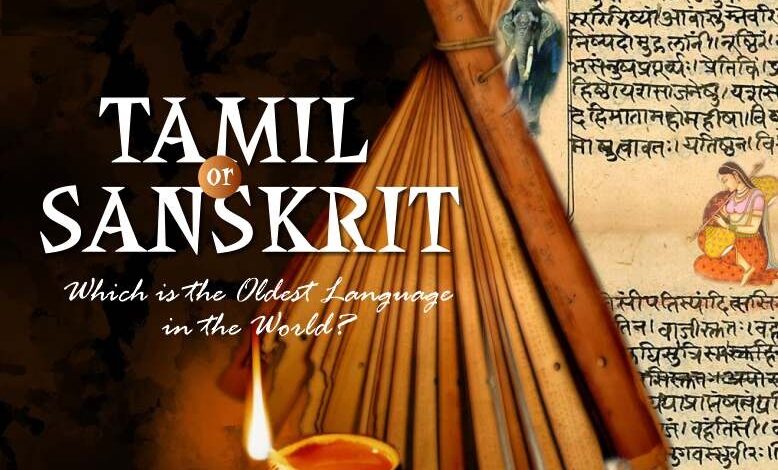Untangling the Threads of Time: The Quest to Discover the World’s Oldest Language

By Agnibeena Ghosh
Language, the intricate fabric that weaves together human interactions, holds within it the echoes of millennia past. With over 7,100 languages in existence today, nearly 40 percent are on the brink of fading into obscurity, labelled as endangered. In this linguistic mosaic, some languages thrive while others teeter on the brink of extinction. The pursuit of determining the world’s oldest language is not merely an intellectual curiosity; it’s an endeavour that unveils the tapestry of human civilization, unravelling secrets that span both science and culture.
The world hosts a staggering array of languages, each a product of its unique history and culture. Almost 40 percent of these languages face the threat of extinction due to dwindling numbers of speakers. Some languages are spoken by fewer than a thousand individuals, while the majority of the global population communicates in just 23 tongues.
The study of language goes beyond deciphering inscriptions; it involves tracing human migrations and interactions throughout history. Deciphering the world’s oldest language involves intricate detective work. Linguists employ various approaches, including studying dialects, speech, gestures, and writing, to determine a language’s age. One technique involves identifying the point at which dialects evolve into distinct languages, rendering communication impossible between speakers. Another perspective considers all languages equally old, rooted in a universal proto-human language, although this concept is challenging to prove.
Sanskrit vs. Tamil: Ancient Texts and Disputed Origins
Sanskrit, a language still producing literature, holds roots in ancient Hindu texts composed between 1500 and 1200 B.C.E. Known as the Vedas, these texts are integral to the religious fabric of ancient India. Deven Patel, professor of South Asia Studies at University of Pennsylvania has called Sanskrit a continuous language. This means that while knowledge of this language still persists, it is not spoken as a vernacular. Tamil, a Dravidian language, boasts a staggering 2,000-year documented history and is still spoken by millions in Southern India and Sri Lanka. The Tolkāppiyam, one of the oldest surviving works of Tamil literature, stirs debate, with estimates ranging from 7,000 to 2,800 years. Determining the world’s oldest language is complex. Political and scientific factors shape histories, and linguistic evolution intertwines with cultural significance. Languages hold “bragging rights” as the oldest and continuously evolving entities.While Sumerian, Akkadian, and Egyptian offer early written records, spoken contenders like Hebrew, Arabic, and Chinese span back millennia. Sanskrit and Tamil highlight the challenges in establishing linguistic ages, demonstrating how historical, cultural, and scientific factors intertwine.
English and German: Distinct Paths from Proto-Germanic
Identifying language origins can involve pinpointing when dialects evolve into distinct languages. English and German, for instance, diverged from a common Proto-Germanic language. The point where mutual understanding between English and German speakers ended marks their distinct origins.
Universal Human Language and Language Evolution
Some linguists propose a universal human language as the ancestral root of all languages. This notion suggests that all languages share a common origin, even if that original language can’t be proven. Generational language evolution results in diverse languages over time.
Oldest Language with Written Records: Sumerian, Akkadian, and Egyptian
Some linguists argue that the title of the “oldest language” should go to one with well-established written records. Sumerian, Akkadian, and Egyptian, using cuneiform and hieroglyphic scripts, boast documented history dating back at least 4600 years. While cuneiform was the earliest written script, the earliest fully formed sentence was found carved on the tomb of an Egyptian pharaoh, in hieroglyphics. These languages are extinct, with no living descendants.
Still Spoken Contenders: Hebrew, Arabic, and Chinese
For languages that continue to be spoken today, Hebrew and Arabic emerge as strong contenders. While their written evidence spans around 3000 years, their origins trace back even further within the Afroasiatic language family, reaching an estimated 18,000 to 8,000 B.C.E, which is almost 20,000 years ago. The diverse Afroasiatic family is widely acknowledged as one of the oldest language groups. Chinese, a monumental linguistic heritage, draws its roots from Proto-Sino-Tibetan around 4,500 years ago. The earliest documented Chinese writing appears on tortoise shells and animal bones from approximately 3,300 years ago.
News Mania Desk / 25th August 2023






